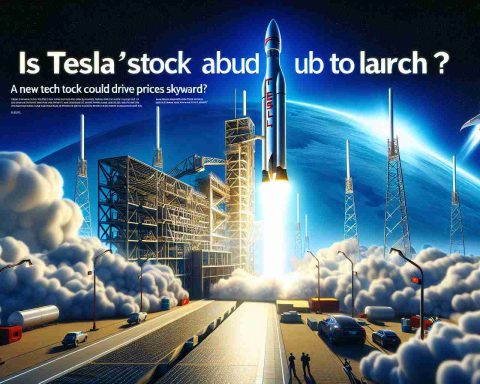Hyundai Unveils the Creta Flex Fuel Prototype
Hyundai has made a significant splash at the Bharat Mobility Expo 2025 by revealing a working prototype of the innovative Creta Flex Fuel. This groundbreaking model is tailored for alternative fuel usage, capable of efficiently running on a range of fuels from E0 to E100—that’s pure petrol to fully ethanol-based fuel. This flexibility in fuel options supports both reduced carbon emissions and aligns with governmental incentives aimed at promoting flex fuel accessibility.
Unlike its conventional counterparts, which feature 1.5-litre petrol and diesel engines, the Creta Flex Fuel is engineered with a nimble 1.0-litre turbocharged three-cylinder engine. This potent engine generates around 118bhp and 170Nm of torque, paired with a six-speed torque converter automatic transmission—a unique setup as similar engines in other models utilize a dual-clutch automatic gearbox.
In addition to the Flex Fuel prototype, Hyundai also introduced the Creta Electric at the event. Priced starting at Rs. 17.99 lakh, this all-electric version offers customers the choice of two battery capacities: 42kWh and 51.4kWh, delivering commendable ranges of 390km and 473km, respectively.
The unveiling of the Creta Flex Fuel and Creta Electric marks a pivotal step for Hyundai towards sustainable driving solutions. Enthusiasts and environmentally conscious consumers alike can look forward to these exciting advancements in the automotive industry.
Examining the Broader Impact of Flex Fuel Innovation
The introduction of Hyundai’s Creta Flex Fuel prototype signifies more than just an engineering marvel; it represents a broader movement towards sustainable transportation that could reshape our societal norms and the global economy. As countries grapple with the pressing issue of climate change, the adoption of flex fuel vehicles—capable of utilizing a mix of petrol and ethanol—may hasten the transition toward greener alternatives and challenge the dominance of fossil fuels in the automotive industry.
Flex fuel technology supports energy diversification, potentially reducing dependence on oil imports, enhancing energy security, and stabilizing fuel prices. Countries actively promoting flex fuels can stimulate their agricultural sectors, as ethanol is derived from crops such as sugarcane and corn. This could result in job creation and economic growth in rural areas, aligning agricultural strategies with national energy policies.
However, the environmental implications cannot be overlooked. While flex fuels promise lowered carbon emissions, the cultivation of ethanol crops can lead to deforestation and increased pesticide usage, impacting biodiversity. Moreover, without stringent regulations, shifts to large-scale biomass production may divert food supplies, raising ethical concerns regarding hunger and food security.
Looking ahead, trends indicate a growing demand for electric and flex fuel vehicles, as consumers become increasingly environmentally conscious. This transition is expected to drive further innovations in automotive technology, influencing manufacturers globally to embrace greener designs, ultimately reshaping the industry landscape.
In summary, Hyundai’s flex fuel initiative aligns with a larger quest for sustainability, potentially redefining the automotive sector, reshaping economies, and urging society to confront the dual challenges of environmental protection and energy independence.
Hyundai’s Creta Flex Fuel: A Game-Changer in Sustainable Mobility
Introduction
At the Bharat Mobility Expo 2025, Hyundai captured attention by unveiling the Creta Flex Fuel prototype, showcasing its commitment to sustainable and innovative vehicle technology. This exciting model not only highlights the automaker’s focus on environmental responsibility but also offers insights into future trends in green mobility.
Key Features of the Creta Flex Fuel
1. Flexible Fuel Options: The Creta Flex Fuel stands out due to its ability to run on a diverse range of fuels—ranging from E0 (pure petrol) to E100 (100% ethanol). This flexibility significantly reduces carbon emissions and enhances fuel efficiency.
2. Advanced Engine Technology: Instead of the traditional 1.5-liter engines, the Creta Flex Fuel is equipped with a 1.0-liter turbocharged three-cylinder engine, capable of producing around 118bhp and 170Nm of torque. This innovative engine is married to a six-speed torque converter automatic transmission, marking a departure from the dual-clutch systems used in similar models.
3. Performance and Efficiency: With its lighter engine and design, the Creta Flex Fuel is poised to offer optimal performance without compromising on efficiency, appealing to both driving enthusiasts and eco-conscious consumers.
Comparison with Other Models
When compared to other vehicles in its class, the Creta Flex Fuel sets a new benchmark for flexibility in fuel usage. Competitor models often limit drivers to either petrol or diesel options, whereas Hyundai’s approach allows for seamless transitions between different fuel types, catering to a broader range of consumer preferences and environmental goals.
Market Analysis
The debut of the Creta Flex Fuel comes at a time when global markets are rapidly shifting towards sustainable and alternative fuel vehicles. Governments are introducing incentives and support for flex-fuel technology, aligning with Hyundai’s direction to attract eco-minded buyers. The Creta Flex Fuel is not just a vehicle; it’s a viable solution to meet evolving regulatory demands and consumer expectations in eco-friendliness.
Insights into Sustainability
Hyundai’s introduction of both the Creta Flex Fuel and the Creta Electric signals an unwavering commitment to sustainability. These models represent a broader trend within the automotive industry towards reducing dependency on fossil fuels and promoting cleaner energy sources. As more manufacturers pivot to include flexible and electric options, consumers can expect an exciting increase in choices for sustainable mobility.
Pros and Cons
| Pros | Cons |
|—————————-|—————————-|
| Versatile fuel choices | Initial costs may be higher than conventional models |
| Innovative engine technology| Limited availability of ethanol fuel in some regions |
| Enhanced performance | Consumer awareness curves for flex fuel technologies |
Conclusion
Hyundai’s Creta Flex Fuel prototype illuminates the future of mobility, promising a blend of performance, flexibility, and environmental consciousness. As the automotive landscape evolves, innovations like the Creta Flex Fuel will play a crucial role in shaping sustainable driving solutions.
For more information on Hyundai’s latest advancements, visit the Hyundai website.













